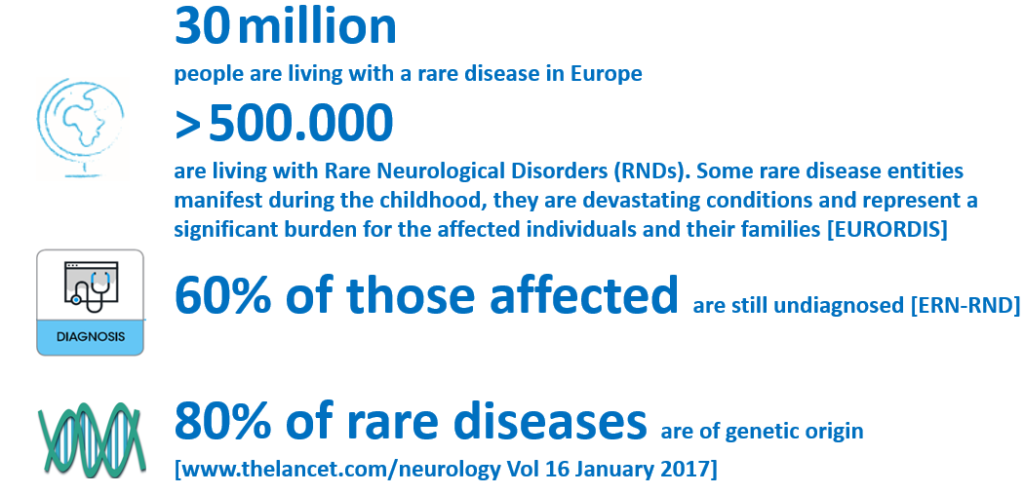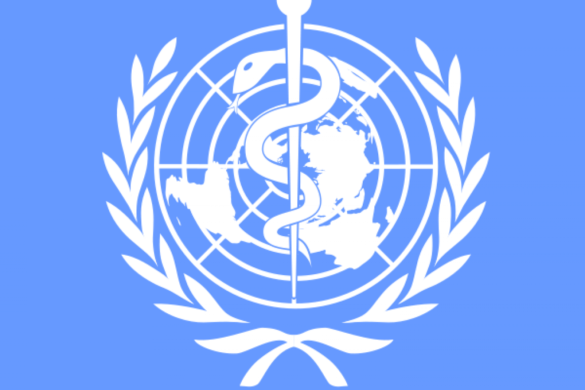EBC VoT 2nd round “VoT2 – Rare Neurological Disorders”: development of new case studies on Ataxia, Dystonia, Phenylketonuria
In the continuity of the Value of Treatment research activities, new case studies have been developed on new therapeutic areas. On March 26th, May 23rd and September 24th 2018, EBC in collaboration with the European Academy of Neurology (EAN) and the European Federation of Neurological Associations (EFNA) launched a second round “VoT2” of case studies on Rare Neurological Disorders (RNDs) focusing upon Ataxia, Dystonia and Phenylketonuria. RNDs pose major challenges (see fig. 1).
Analysing the treatment gap and underlying causes, particularly related to health services delivery, remains central in the study. The study’s research framework includes the development of a series of qualitative and quantitative benchmarks to identify treatment gaps “barriers to care” and causal factors along the continuum of care from prodromal, early diagnosis to disease management including rehabilitation (care pathway analysis) as well as to estimate the socioeconomic impact and health gains from best practice healthcare interventions in comparison with current care (economic evaluation). The two-year study on the value of early diagnosis and intervention for rare neurological disorders will aim to assess the benefits of specialist centres and coordinated care on patient outcomes.
The EBC VoT2 joint meeting on 15 May 2019 objective was to provide a project state of play, and discuss research methodology (care pathways, outcome variables measurement including economic analysis) and next steps. The meeting was also be the opportunity to examine the health policy perspective and to reiterate the need to continue building synergies with current EU initiatives such as the European Reference Networks for Rare Diseases (ERNs).
For many patients, considerable barriers exist in terms of access to appropriate care, delayed diagnosis, and treatment options. When patients are diagnosed, many are unable to access resources such as centres of expertise (or specialist centres), coordinated care, patient support systems, and effective treatment. Treatment of chronic RNDs has become increasingly multifaceted and comprises either disease-modifying drugs with different mechanisms of action, symptomatic therapies or other supportive therapies, or surgical procedures such as deep brain stimulation. Treatment must be highly customized to the needs of the individual.
See Giunti et al. published article (May 2019) on “Toward earlier diagnosis and treatment of rare neurological disorders: the value of coordinated care and specialist centers”
Contact person: Vinciane Quoidbach, EBC Research Project Manager – vinc@braincouncil.eu
Researchers collaboration:
– UCLH: Prof. Paola Giunti and Dr Julie Vallortigara – Ataxia care pathways analysis
– UCL: Prof. Steve Morris and Emma Hudson– Ataxia and Phenylketonuria (PKU) health economic studies
– University of Zagreb Medical School: Prof. Maja Relja, Prof. Stipe Oresković and Prof. Vladimir Trkulja – Dystonia care pathways analysis and economic evaluation
– The Mater Misericordiae University Hospital and UCD: Prof. Gregory Pastores and Prof. Thilo Kroll – PKU care pathways analysis
European Brain Council – EBC https://www.braincouncil.eu/










